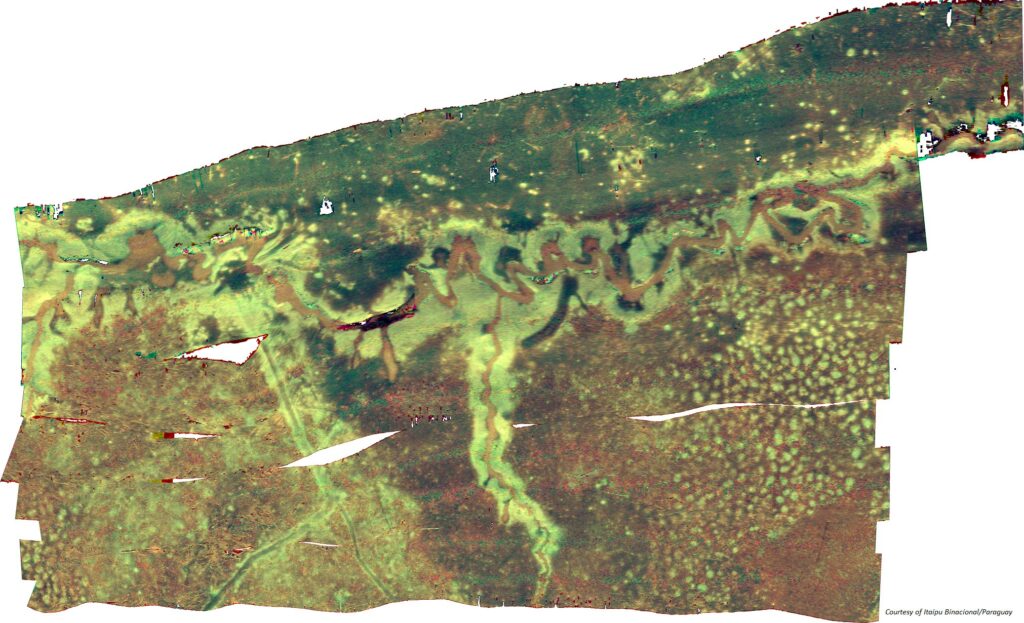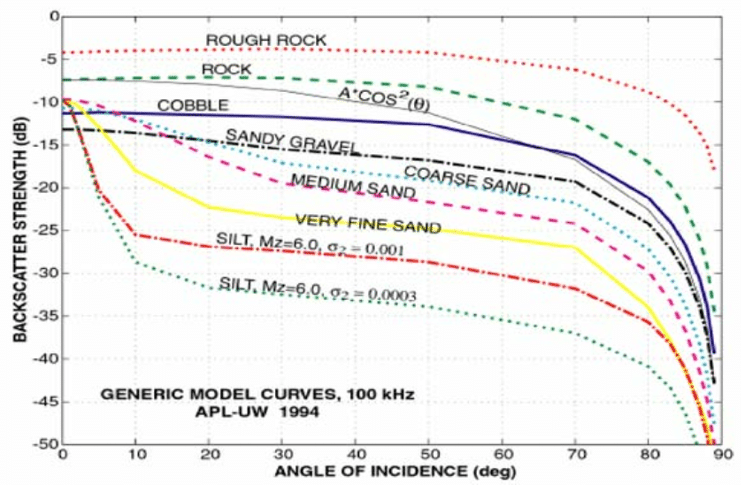Resources
March 19, 2023
MultiSpectral versus Multifrequency Backscatter: A Generational Advancement
Knowledge & Training
Multibeam Backscatter is a tool used in seafloor characterization, and R2Sonic‘s recent MultiSpectral Backscatter advancement dramatically improves this process. MultiSpectral Backscatter comprises two or more frequencies collected in one-pass using an advanced sonar capable of multifrequency transmissions, either interleaved or simultaneous.

MultiSpectral Backscatter should not be confused with MultiFrequency Backscatter
Older sonars can collect Multifrequency Backscatter by passing over the same area multiple times using a different single frequency in each pass, whether using the same or different sonars. The difference between the two definitions above is far more than semantics.
The amount of acoustic energy the seafloor returns to a sonar depends on several factors, including sediment type, sonar frequency, sonar characteristics (radiometric), and grazing angle (geometric). Using different frequencies on the same patch of seafloor results in different backscatter responses enabling better seafloor characterization potential. However, using an older, single-frequency sonar results in a grazing-angle change due to multiple passes, exponentially complicating a potential characterization solution. Using different sonars at different frequencies cannot eliminate the grazing-angle problem even if sonars are normalized to reduce radiometric effects.

MultiSpectral Backscatter, collected with R2Sonic sonars, removes the geometric and radiometric problems inherent with MultiFrequency Backscatter collected by older, less capable sonars regardless of whether or not they are normalized.
R2Sonic’s unique and patented “OnePass” approach allows the end user to collect the highest quality and reliable MultiSpectral Backscatter data in the most efficient manner, dramatically reducing the time, cost and complexity over alternate methods.
References:
- Brown, C.J. et al., 2019, Multispectral multibeam echo sounder backscatter as a tool for improved seafloor characterization, Geosciences, MDPI, 19pp.
- Huff, L., 2018, Acoustic Remote Sensing as a Tool for Habitat Mapping in Alaska Waters. Marine Habitat Mapping Technology for Alaska, 18pp.
- Hughes Clarke, J.E., 2015, Multispectral Acoustic Backscatter from Multibeam, Improved Classification Potential, Proceedings of the United States Hydrographic Conference, The Hydrographic Society of America, 17pp.
Installation Survey
March 29, 2023
Tips for surveying over soft & muddy bottoms
Many surveys are in areas that are less than ideal for acoustics. These types of areas have seafloors that are soft and comprised mostly of mud as opposed to sand or gravel. The multibeam transmitter emits an acoustic pulse that reflects mostly off of the bottom and back to the…
coverage Resolution Survey
VIEW MORE
March 29, 2023
1024 beams vs 1024 soundings, are they the same?
The difference lies in the data collection method: interpolated vs independent Three years ago, R2Sonic was the first MBES manufacturer to launch the “then new” technical mode Ultra High Density (UHD) which consists in collecting 1024 independent soundings, an improvement from the traditional 256 soundings. This 400% increase in number…
coverage surroundings uhd
VIEW MORE
March 29, 2023
MBES can’t be IHO compliant and here is why
MBES and the IHO SP44 Standards for Hydrographic Surveys The International Hydrographic Organisation, based in Monaco, published the 5th edition of Special Publication No 44 Standards for Hydrographic Surveys in February 2008. SP44 sets forth the minimum standards for survey accuracy. By 2008, multibeam echosounders had been well established as standard equipment for hydrographic…
coverage iho Survey
VIEW MORE
